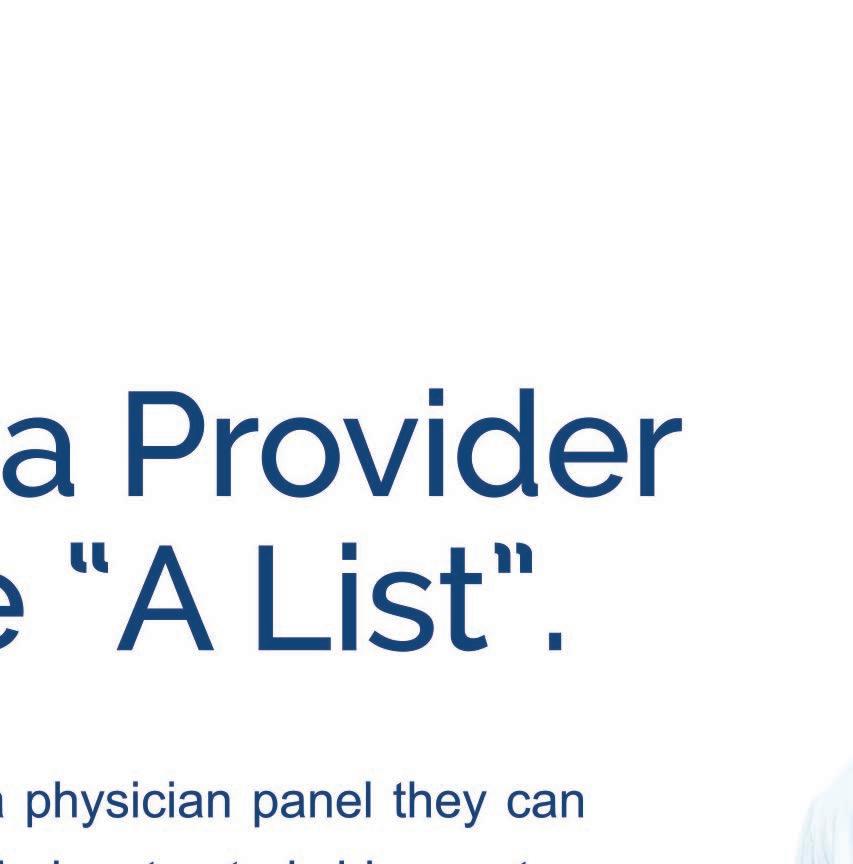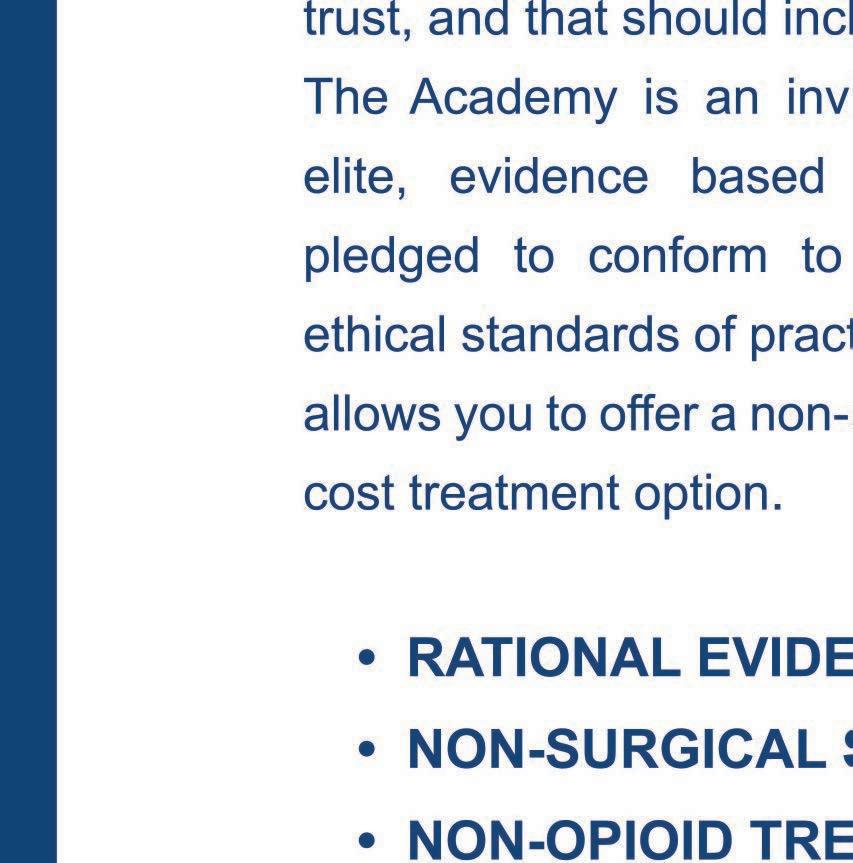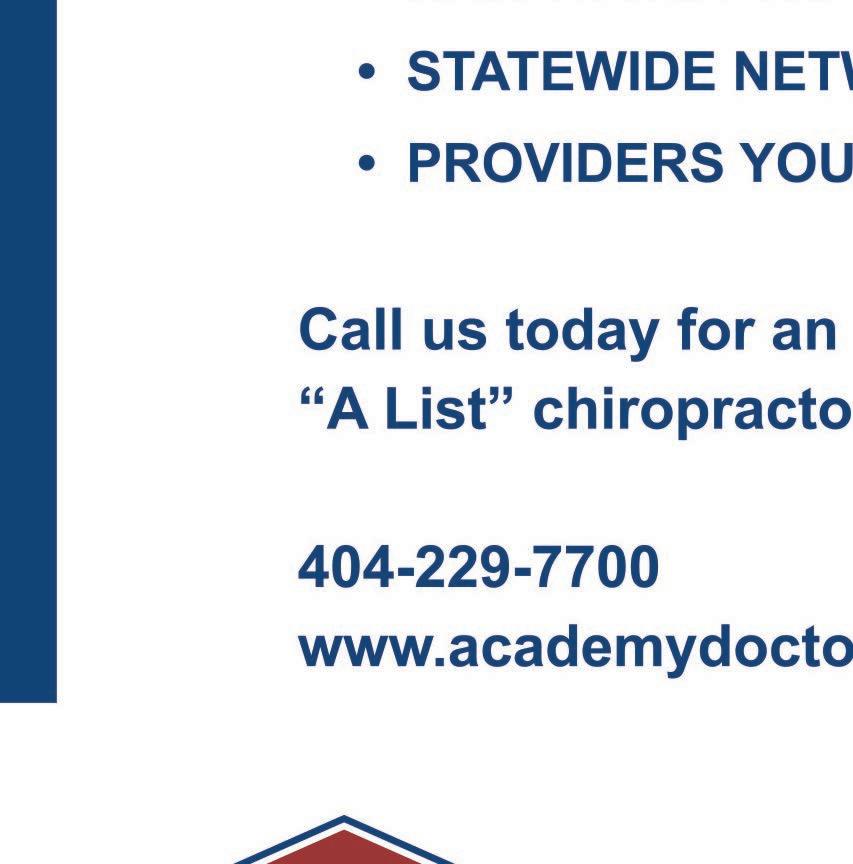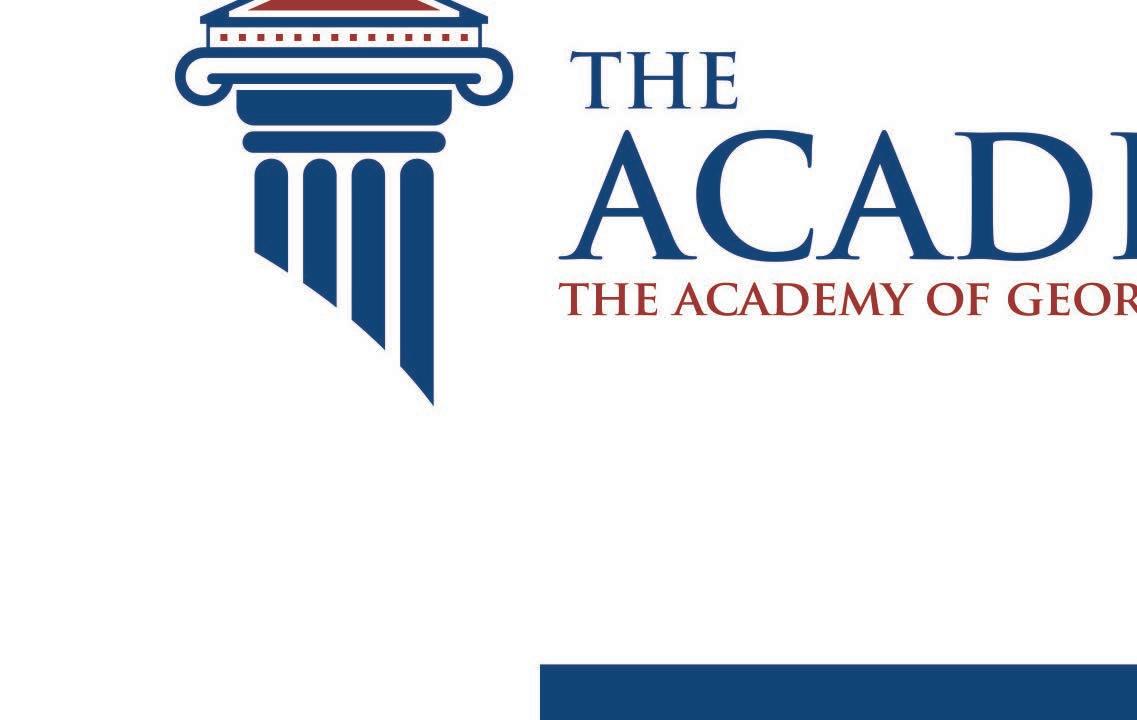
5 minute read
Chiropractic for Work Injuries

Dr. Chris Connelly

In spite of the fact that millions of Americans successfully treat with chiropractors every year, chiropractors remain underutilized in the workers compensation system. Unfortunately there are many assumptions and stereotypes about chiropractors in the worker’s compensation community that have caused insurers and claims management personnel to unreasonably avoid chiropractors, even those who understand the issues in worker’s compensation and are able to treat effectively to reduce costs, encourage early return to work, and help avoid the use of drugs or surgery. The purpose of this article is to introduce you to chiropractic care and give you some guidelines for how to choose an effective chiropractor to be a part of your team.
With the present opioid epidemic and recent medical research in Journal of the American Medical Association (JAMA), as well as, Annals of Internal Medicine supporting the use of spinal manipulative therapy as a first line treatment for acute low back pain, it’s a great time to take a second look at including knowledgeable chiropractors in the care of injured workers.



In fact, after an extensive study of all available care for low back problems, the federal Agency for Health Care Policy and Research (now the Agency for Health Care Research and Quality) recommended that low back pain sufferers choose the most conservative care first. And it recommended spinal manipulation as the only safe and effective, drugless form of initial professional treatment for acute low back problems in adults. The evidence supports that doctors of chiropractic are well suited to diagnose, treat, and manage the treatment of patients with low back pain disorders.

Low back pain initiated with a doctor of chiropractic (DC) saves 40 percent on health care costs when compared with care initiated through a medical doctor (MD), according to a study that analyzed data from 85,000 Blue Cross Blue Shield (BCBS) beneficiaries in Tennessee over a two-year span. (Liliedahl et al (2010), Journal of Manipulative and Physiological Therapeutics)
In a sample of 1,885 workers there was a very strong association between surgery and first provider seen for the injury even after adjustment for other important variables. Approximately 42.7% of workers who first saw a surgeon had surgery, in contrast to only 1.5% of those who saw a chiropractor. (Spine. 2013;38(11):953-964) It’s important to note that none of the researchers of this study are chiropractors.
This study is a great reminder that provider selection (even within the same specialty) is an important and often missed factor in a successful outcome. It also leads us into my top 6 tips for a successful outcome in a work injury:
1. Identify more serious injuries early.
2. Identify and address apportionment, catastrophizing, malingering and symptom amplification early.
3. Provider selection.
4. Patient selection for testing and treatment.
5. Return to normal activities and work as soon as possible.

6. Patient education and reassurance.
These tips will be the topics for future articles but hopefully this article will open the door for specialize chiropractors in the work injury arena.
Dr. Chris Connelly is a chiropractor from Atlanta, Georgia who is a Certified Brain Injury Specialists by the Brain Injury Association of America. He has been in clinical practice for 25 years and has treated over 20,000 trauma cases. “A good diagnosis is the first step to a great treatment” and “working together to get patients better” are two mantras for good patient care in his office.












TPA Adjuster
Home Health
Risk Manager
Neurosurgeon
Case Manager
HR Professional
Brain Injury Facility
Physical Therapy
Orthopedic Practice
Urgent Care/Occupational Medicine
Defense/Claimant Attorney
Pain Management Practice
Safety Professional
Transportation Surveillance Broker
DME
Nominations: FEB 7 - APR 1
Voting: APR 4 - JUN 1
Winners Announced: JUL 2



Whose Employee Are They Anyways?
Lexi Laufer, Attorney
Few topics have spurred more debate in recent years than the ever-changing definition of “employee” and the requirements necessary to establish an employment relationship. At the forefront of this debate are organizations such as temporary help contracting firms, employee leasing companies, and professional employment organizations.
In practice, these overlapping relationships can lead to scenarios where a worker receives wages from one company that is insured through another company, but performs work on behalf of yet another company. When a worker is injured, confusion arises about which company is responsible for Workers’ Compensation coverage.
As a result, understanding the various types of employment relationships is an integral first step to determining which company covers the injured worker.
Leased Employees
Leased employees are direct employees of employee leasing companies or PEOs which lease the employee to client companies to perform labor.
Employee Leasing Companies - Definition: Defined by O.C.G.A. § 34-8-32, an employee leasing company is a business entity that supplies workers to a client company on a temporary basis or for a specific project with a start/end date.
Coverage: During the temporary employment period the leased employee remains a direct employee of the staffing company.
Example: Feyonce’, a wedding dress designer, needs thirty (30) seamstresses to make dresses for a special order. Feyonce’ calls ShortNSweet, a temporary employment agency, that provides thirty (30) workers. If one of the workers supplied to Feyonce’ is injured, ShortNSweet is the employer.
Professional Employer Organization (PEO) - Definition: An employee leasing company that enters into a contractual agreement with the client company to undertake certain employer responsibilities, resulting in a co- employment relationship. The PEO handles human resource responsibilities of the client company but does not provide workers.
Coverage: The PEO is the leased employee’s “Administrative Employer” and the client company who hired the PEO is considered the “Worksite Employer.” The worksite employer maintains full control and direction over the leased employees’ day-to-day operations.
Example: Due to the sudden surge in weddings, Feyonce’ needs help managing payroll, benefits and other human resources functions. Feyonce’ hires IDo, a PEO, to manage these employee-related tasks. Feyonce’ and IDo enter into an agreement which establishes a co-employment relationship.
Statutory Employees
When a worker’s immediate employer is not covered under the Act or becomes insolvent, O.C.G.A. 34-9-8 attaches secondary liability to a principal, intermediate, or subcontractor who had control over the project/premises where the laborer was working.
Coverage: The contractor, the employee leasing company or the PEO are considered the statutory employer and are therefore the injured worker’s employer.
Example: PartyBus, a transportation rental business, hires Rider to provide busses. Rider then hires Driver to perform the work PartyBus hired Rider to perform. Driver gets hurt. Shortly thereafter, Rider’s insurer becomes insolvent. PartyBus may be considered Driver’s statutory employer.
As you can see, determining which company employs an injured worker is not always an easy feat. Fortunately, there are cases pending before the State Board that could provide clarity on how to determine who the employer is for coverage purposes in unconventional-multi-employer situations.
Lexi earned her Bachelor’s in Business Administration from Stetson University, summa cum laude, in 2016 and was recognized as one of the two top students in her major. She later received her Juris Doctorate from the University of Florida Levin College of Law in 2019. While in law school, Lexi was a member of the Florida Moot Court Team and served on the Justice Campbell Thornal Executive Board as the activities chair assistant. Lexi also had the opportunity to work with the inhouse counsel of a Fortune 500 company, as well as the Georgia Office of the Attorney General’s commercial transactions and litigation team. Lexi now focuses her practice on the defense of workers’ compensation claims in Georgia.











